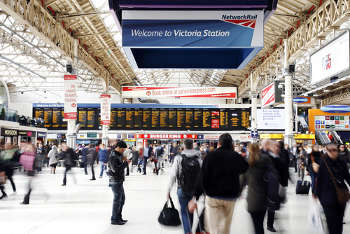Passengers on the Southern rail franchise have borne the brunt of massive disruption caused by poor planning and industrial action and recieved only ‘paltry’ compensation, according to auditors and MPs.
A report from the National Audit Office (NAO) concludes that to date, the Thameslink, Southern and Great Northern rail franchise has not delivered value for money, with passengers experiencing the worst service performance on the national rail network.

DfT is considering expanding £20m new station fund
Lilian Greenwood MP, chair of the Transport Select Committee, said the report demonstrates that the Department for Transport ‘has a long way to go in rectifying the situation and learning the lessons for future rail franchises’.
She also compained that passengers had recieved 'paltry' amounts of compensation despite the Government receiving the income from the franchise that it expected.
‘The Department choose to protect GTR from substantial revenue losses, and, despite the sometimes appalling levels of service, achieved a return to the taxpayer - £760m from September 2014–August 2017, net of a relatively paltry £33m paid to customers in compensation.
‘Meanwhile passengers, many of whom are part of a captive, commuter market with limited alternative travel options, had to suffer the consequences of poor planning and delivery by the DfT, GTR and Network Rail. The Department got the balance of risk badly wrong to the harsh detriment of passengers, and, as the Transport Committee said in 2016, this debacle must never be repeated.’
Since Govia Thameslink Railway (GTR) started operating the full franchise in July 2015, around 7.7% of planned services (146,000) have either been cancelled or have been delayed by over 30 minutes, compared to 2.8% on the rest of the network.
The NAO found that GTR was responsible for 60% (88,000) of all cancelled and significantly late trains, with staff unavailability, including industrial action, and the condition of some train fleets as contributing factors. Network Rail’s management of the network and failures in the infrastructure caused 37% of this type of disruption.
The report also lays much of the responsibility for the disruption on the DfT, which designed and let the contract, under which it pays GTR to run services in return for fare revenue.
It states that both the DfT and GTR consider that industrial action was the most important cause of crew shortages and that, while it would have been difficult to foresee industrial action on the scale that occurred in response to GTR’s introduction of driver only operation,, the DfT did not fully evaluate the possible effects on passengers of different scenarios of industrial action or ask GTR to do so.
Neither did the DfT seek sufficient assurances that GTR would have enough train drivers when it took on the franchise.
The report also states that the DfT contracted GTR to deliver a specific level of increased services despite concerns from Network Rail and the company that the network could not support the proposed timetables reliably. The committee pointed out that while the percentage of trains arriving within five minutes of their scheduled time has exceeded 80% since last March, this is still below the national average.
It said: ‘It is unclear how the Department will incentivise Govia Thameslink to deliver good services for passengers in the future, having removed its ability to use financial performance penalties up to September 2018. Negotiations on a second remedial plan, and interim performance measures, are ongoing.’
The DfT pointed out that the franchise was brought together to deliver the Thameslink Programme, which it said will transform North-South journeys through London this year.
A spokesperson said: ‘The NAO report confirms that the primary cause of delays and cancellations to passengers has been lack of available staff, which is a direct result of strike action. It is time for the RMT to call off its needless strike action.
‘Clearly the disruption passengers have experienced is unacceptable but the NAO recognises that service has improved over the last 12 months.’
GTR chief executive Charles Horton said: ‘TSGN is the UK’s largest franchise – carrying almost a million passengers a day – and the report identifies numerous root causes for the challenges it has faced since its formation in 2014. These difficulties have sometimes been greater than expected and we regret the disruption caused to our passengers.
‘It is only right that a franchise of TSGN’s unprecedented scale and ambition receives scrutiny, and I am more confident than ever that its trailblazing achievements will be felt by rail travellers for generations to come.’
Register now for full access
Register just once to get unrestricted, real-time coverage of the issues and challenges facing UK transport and highways engineers.
Full website content includes the latest news, exclusive commentary from leading industry figures and detailed topical analysis of the highways, transportation, environment and place-shaping sectors.
Use the link below to register your details for full, free access.
Already a registered? Login